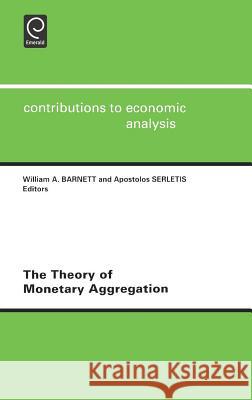The Theory of Monetary Aggregation » książka
The Theory of Monetary Aggregation
ISBN-13: 9780444501196 / Angielski / Twarda / 2000 / 712 str.
In recent years, there has been renewed interest in index number and aggregation theory, since the two previously divergent fields have been successfully unified. The underlying aggregator functions which are weakly separable subfunctions of utility and production functions, are the building blocks of economic theory, and the derivation of index numbers based upon their ability to track those building blocks is now called the "economic theory of index numbers." William Barnett, the coeditor of this volume, introduced modern economic index number theory into monetary economics. His merger of economic index number theory, with monetary theory was based upon the use of Diewert's approach to producing "superlative" nonparametric approximations to the theoretically exact aggregator functions.This book comprises a focussed and unified collection of Barnett's most important publications in this area. The papers in the book have been organized into logical sections, with unifying introductions and overviews. The result is a systematic development of the state-of-the-art in monetary and financial aggregation theory. The sections cover the origin of the user cost price of monetary services. Exact aggregation of monetary assets on the demand side for consumers and firms, and on the supply side for financial intermediaries, general equilibrium of all economic agents' demands and supplies, dynamic solution of the exact system, and extension to monetary aggregation under risk. The extension of index number theory to the case of risk is completely general, and can be applied to tracking any exact economic aggregator under risk. In all cases, the criterion used for evaluation is the tracking ability of the approximation to the exact aggregator function of economic theory. Many of the empirical and policy puzzles in monetary economics disappear when simple sum monetary aggregates are replaced by index numbers that are coherent with theory. Simple sum monetary aggregates became incoherent with theory, when monetary assets began paying interest and therefore could no longer be viewed as perfect substitutes. This is a useful tool to those associated with economics departments within universities, business schools, central banks and federal governments, financial institutions including underwriters, bankers and stockbrokers.











